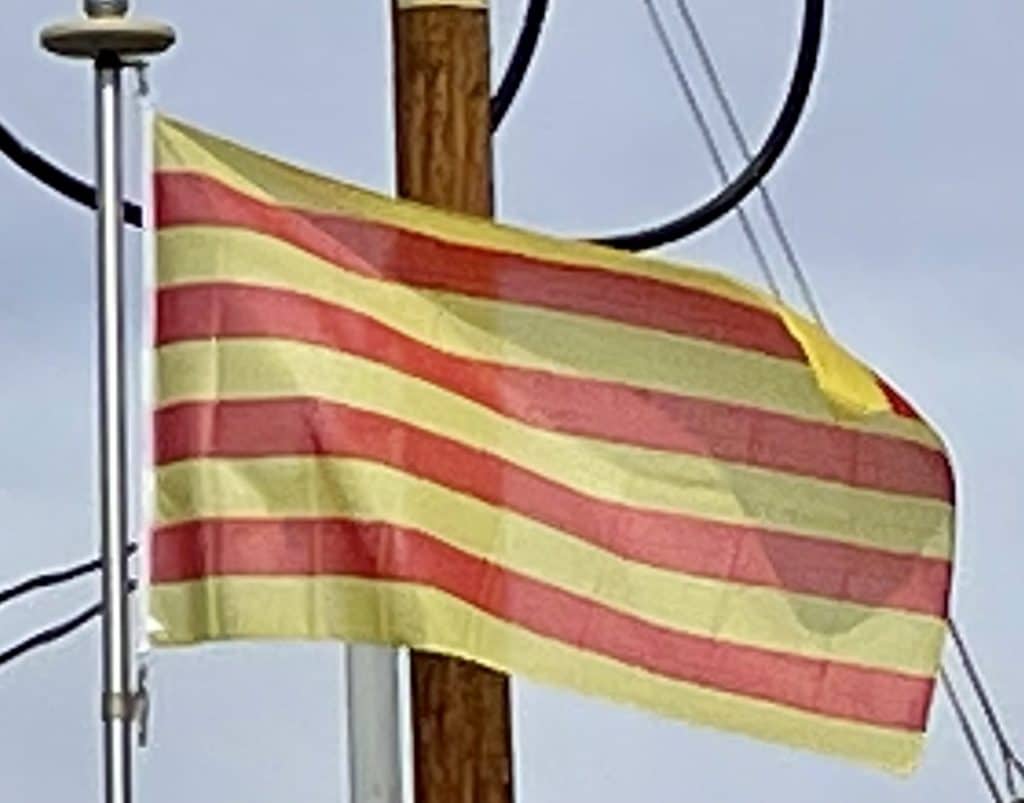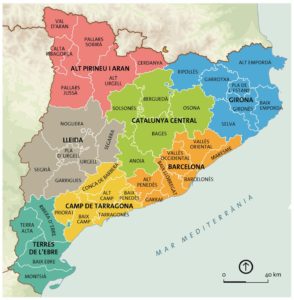
The Central Catalan Depression is a plain located between the Pyrenees and Pre-Coastal Mountains. Elevation ranges from 200 to 600 meters (660 to 1,970 feet). The plains and the water that descend from the Pyrenees have made it fertile territory for agriculture and numerous irrigation canals have been built. Another major plain is the Empordà, located in the northeast.
The Catalan Mediterranean system is based on two ranges running roughly parallel to the coast (southwest–northeast), called the Coastal and the Pre-Coastal Ranges. The Coastal Range is both the shorter and the lower of the two, while the Pre-Coastal is greater in both length and elevation. Areas within the Pre-Coastal Range include Montserrat, Montseny and the Ports de Tortosa-Beseit. Lowlands alternate with the Costal and Pre-Costal Ranges. The Coastal Lowland is located to the East of the Coastal Range between it and the coast, while the Pre-Coastal Lowlands are located inland, between the Costal and Pre-Costal Ranges, and includes the Vallès and Penedès plains.
Economy:
A highly industrialized land, the nominal GDP of Catalonia in 2018 was €228 billion (second after the community of Madrid, €230 billion) and the per capita GDP was €30,426 ($32,888), behind Madrid (€35,041), the Basque Country (€33,223), and Navarre (€31,389). In recent years, and increasingly following the unilateral declaration of independence in 2017, there has been a negative net relocation rate of companies based in Catalonia moving to other autonomous communities of Spain. From the 2017 independence referendum until the end of 2018, for example, Catalonia lost 5454 companies to other parts of Spain (mainly Madrid), 2359 only in 2018, gaining 467 new ones from the rest of the country during 2018.
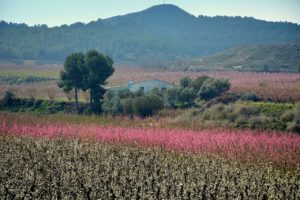
The distribution of sectors is as follows:
- Primary sector: 3%. The amount of land devoted to agricultural use is 33%.
- Secondary sector: 37% (compared to Spain’s 29%)
- Tertiary sector: 60% (compared to Spain’s 67%)
The main tourist destinations in Catalonia are the city of Barcelona, the beaches of the Costa Brava in Girona, the beaches of the Costa del Maresme and Costa del Garraf from Malgrat de Mar to Vilanova i la Geltrú and the Costa Daurada in Tarragona.
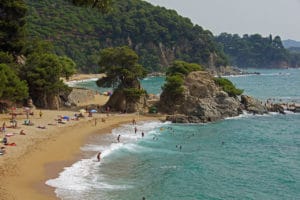
In the High Pyrenees there are several ski resorts, near Lleida. On 1 November 2012, Catalonia started charging a tourist tax. The revenue is used to promote tourism, and to maintain and upgrade tourism-related infrastructure.
Transportation:
Airports in Catalonia are owned and operated by Aena (a Spanish Government entity) except two airports in Lleida which are operated by Aeroports de Catalunya (an entity belonging to the Government of Catalonia).
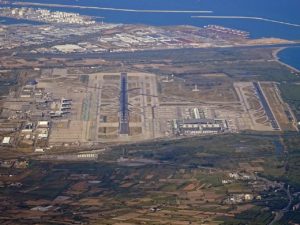
- Barcelona El Prat Airport (Aena)
- Girona-Costa Brava Airport (Aena)
- Reus Airport (Aena)
- Lleida-Alguaire Airport (Aeroports de Catalunya)
- Sabadell Airport (Aena)
- La Seu d’Urgell Airport (Aeroports de Catalunya)
Since the Middle Ages, Catalonia has been well integrated into international maritime networks. The port of Barcelona (owned and operated by Puertos del Estado [es], a Spanish Government entity) is an industrial, commercial and tourist port of worldwide importance. It is sixth largest cruise port in the world, the first in Europe and the Mediterranean with 2,364,292 passengers in 2014. The ports of Tarragona (owned and operated by Puertos del Estado) in the southwest and Palamós near Girona at northeast are much more modest. The port of Palamós and the other ports in Catalonia (26) are operated and administered by Ports de la Generalitat [ca], a Catalan Government entity.
The principal highways are AP-7 (Autopista de la Mediterrània) and A-7 (Autovia de la Mediterrània). They follow the coast from the French border to Valencia, Murcia and Andalusia. The main roads generally radiate from Barcelona. The AP-2 ![]() (Autopista del Nord-est) and A-2 (Autovia del Nord-est) connect inland and onward to Madrid.
(Autopista del Nord-est) and A-2 (Autovia del Nord-est) connect inland and onward to Madrid.
